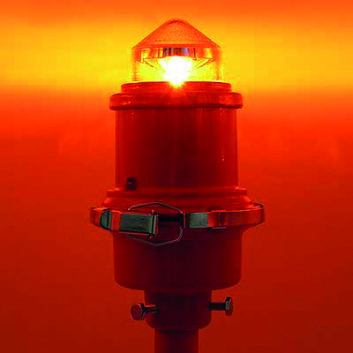
Reader Bob Meister wrote to Radio World with the following question:
In the Feb. 3 issue, a sidebar to the Vertical Bridge story, “Night Vision Issue Comes to Light,” concerned red LED obstruction lights and the need for IR emissions to allow night-vision visibility.
I have to wonder how the average tower owner — broadcast station or Vertical Bridge — is going to detect whether the IR emitter is actually operating.
With incandescent or visible LED lights, one can look up at the tower lights and determine they’re working, but not so with IR emitters, which put out light energy outside our visible range. You’d need the same night-vision goggles or some sensor to “see” the IR emission.
Most stations have some kind of automated system to detect tower light outages, but there could still be some smaller facilities that have a human do that inspection half an hour after local sunset. It’s hard enough to ensure such an inspection actually gets done every day; how are you going to get him/her to wear NVG to “see” the IR?
Tower light systems usually monitor the current being sent to each beacon and obstruction light, and sensors are adjusted to detect the average current expected on functioning illuminators. Since LEDs draw so little power, and IR emitters would only contribute a small fraction of the total power for each light, I’m not sure how one would actually monitor this IR activity at each point on a tower.
Like a lot of rules and regulations, it’s great for the FAA to require IR emissions on tower lights but nearly impossible to detect outages that would require FAA notification and a subsequent NOTAM.
Richard Hickey responds
Radio World submitted Bob Meister’s query to Richard Hickey, director, regulatory compliance at Vertical Bridge. Hickey replied:

Interesting questions with answers that may not be easily integrated by all tower owners.
First, FAA red lighting consists of L-864 medium intensity beacons and L-810 low intensity (“marker lights”). Red LED is the only technology without an IR signature.
The major manufacturers of red LED lighting started incorporating IR devices into their products soon after seeing the first safety bulletins from the CAF and FAA, including making the lighting controllers capable of sensing the additional current in the IR device circuit when combined with the LED string or quadrant. Vertical Bridge stipulated the requirement for IR signature in red LED lighting from all supply sources as soon as it was made available.
As Bernard Borghei of Vertical Bridge stated, the best way to determine if your red LED lighting system is NVG-friendly is to contact the manufacturer with the serial number, invoice number or even the product manual that came with the lighting.
Vertical Bridge has every lighting system in our total portfolio monitored through one of two NOC facilities, both manned 24/7/365, and both have been evaluated and approved by the FCC for QLI Waiver status.
In this scenario, the IR devices are monitored (current detection) and NOTAMs opened upon failure within the FAA guidelines. If a red LED in any position on a tower fails and we cannot verify the presence of IR in the other tower lights, we replace the failed lighting at that level and top lighting along with the lighting controller, if necessary, to ensure a compliant system within the current FAA/FCC guidelines.
Mr. Meister touches on a scenario commonly found at many tower sites, particularly broadcast, where site engineers are routinely checking on the tower(s) daily and many actually work at the site.
Visual monitoring is still accepted by the FAA and FCC (see FAA AC 70/7460-1M Chapter 4.4.7). The owner of a tower can have someone physically look at the lighting system once every 24 hours in each operational mode and log the results, maintaining a log covering the last two years, and opening any required NOTAMs immediately if the duration of the failure is (or potentially was) 30 minutes. Visual monitoring of IR devices may be possible using night vision goggles, binoculars or a night vision camera, but one would need to access all sides of the tower in order to see if all the lighting IR nodes were functioning properly.
A replacement controller with the proper monitoring abilities may be less expensive and would almost certainly facilitate the monitoring process.
This statement, also from AC 70/7460-1M, would seemingly apply to IR devices as well: “In the event a structure is not readily accessible for visual observation, a properly maintained automatic monitor should be used. This monitor should be designed to register the malfunction of any light on the obstruction regardless of its position or color. When using remote monitoring devices, the system’s communication and operational status should be confirmed at least once every 24 hours.”












